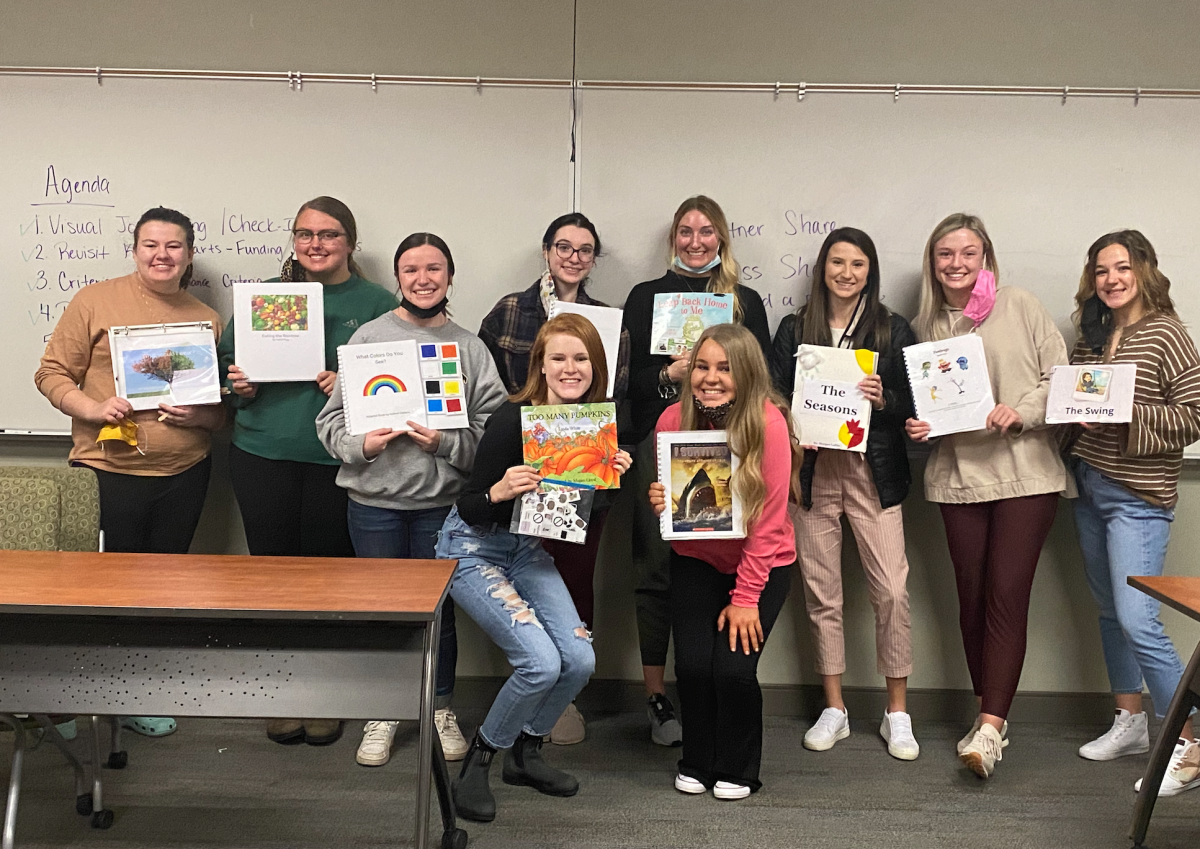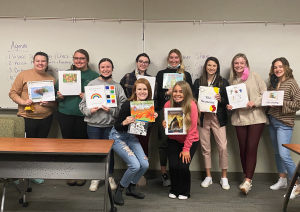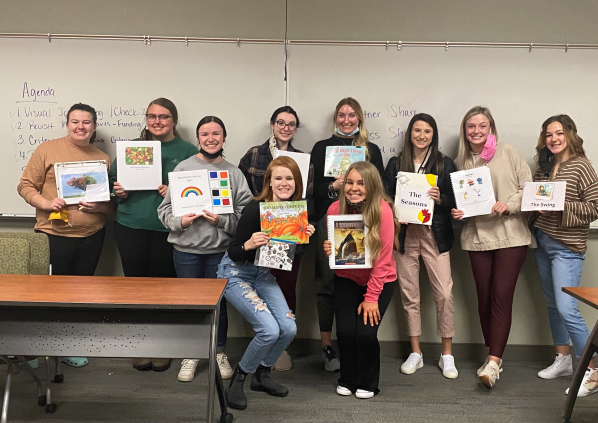One of the major assignments in Dr. Aftynne Cheek’s “Individualized Assessment and Curriculum” course is creating adapted books, where students adapt books in ways that assist children with both cognitive and physical disabilities in reading them. Adaptations range from simplifying the text of a story to adding features such as page-turners to books.
“In this course, I try to make the content practical,” said Cheek, who is the undergraduate special education program director and assistant professor in the Department of Reading Education and Special Education.
“By having my students create their own adapted books, they begin to understand the time and thought needed to adapt materials for their students,” noted Cheek.
“By having my students create their own adapted books, they begin to understand the time and thought needed to adapt materials for their students,” she noted. “They are also exposed to the IDEA Factory and other library resources.”
She added, “This project has become the hallmark of this course, and I always enjoy seeing their final projects!
The goals of the course are to examine current issues and methods related to assessment, personalized curriculum development, and the planning, implementation, and evaluation of instruction of students with moderate and severe disabilities.
Student Reflections on the Assignment
For special education major Erin Barnette, the assignment helped her learn to ask “why adapt materials and for whom.”
“It taught me to take time to develop a coherent plan in order to better serve the students I will work with,” she added.
Barnette created summary pictures to accompany the book Too Many Pumpkins by Linda White. By placing a picture on each page of the book, she was able to adapt the book for students with disabilities in the area of reading comprehension.

Some students created their own original books. Special education major Ireland Gattens’ book focused on color identification, which included modified text, images that depict a color, and fill-in-the-blank areas completed with velcro pieces.
“This book can be used by a range of students, but is mostly for students with extensive support needs,” said Gattens. “Students working on reading, reading comprehension, matching, and color identification can benefit from this interactive book.”
“This project opened my eyes to the multitude of adaptations that can be used,” she noted. “I learned more about specific adaptations, the extended content standards of North Carolina, and how to best adapt a story to fit a student's needs.”
Special Education major Makenzie Pucci also created their own book, which focused on feelings and emotions.
“This project helped me to realize that there are so many different unique and creative ways to help students learn and succeed through making an adapted book,” said Pucci. “It also helped me realize that students' abilities have a wide range.”
Implementing in Future Classrooms
After graduation, Gattens plans to work in an adapted setting. “I can use my book as an individual reading activity, a guided reading practice, an assessment on color identification, or as an interactive way of getting students engaged with a text. There are many options for this book!”
Pucci will implement this project in her classroom by making multiple types of books for a variety of subjects. “I now understand what it takes to make an adapted book and the time it takes to make one.”
For Barnette, she plans to be flexible with her adaptations and adjust accordingly. “If students are confused by the adaptations to books, materials, etc., they will not learn to the best of their abilities.”

